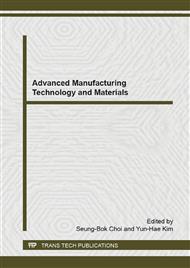p.172
p.181
p.185
p.190
p.194
p.198
p.202
p.206
p.213
Low Adhesive Superhydrophobicity and Self-Cleaning Property of Moth Wing
Abstract:
The microstructure, hydrophobicity, adhesion, and chemical composition of moth wing surfaces were investigated by a scanning electron microscope (SEM), a contact angle (CA) meter, and a Fourier transform infrared spectrometer (FT-IR). Using ground calcium carbonate (heavy CaCO3) as contaminating particle, the self-cleaning performance of wing surface was evaluated. The self-cleaning mechanism was discussed from the perspective of biological coupling. The wing surfaces, composed of naturally hydrophobic material (chitin, protein, fat, etc.), possess complicated hierarchical micro/nano structures. According to the large CA (138.9~158.4°) and small sliding angle (SA, 1~3°) of water droplet, moth wing surface is of low adhesion and high hydrophobicity. The removal rate of contaminating particle from wing surface is averagely 83.8%. There is a good positive correlation (r=0.81) between particle removal rate and roughness index of wing surface. The coupling effect of material element and structural element leads to the remarkable hydrophobicity and self-cleaning property of the wing surface. Moth wing can be potentially used as a template for biomimetic design of functional material with complex wettability. This work may offer interesting inspirations for preparation of smart interfacial material.
Info:
Periodical:
Pages:
194-197
Citation:
Online since:
January 2015
Keywords:
Price:
Сopyright:
© 2015 Trans Tech Publications Ltd. All Rights Reserved
Share:
Citation:


